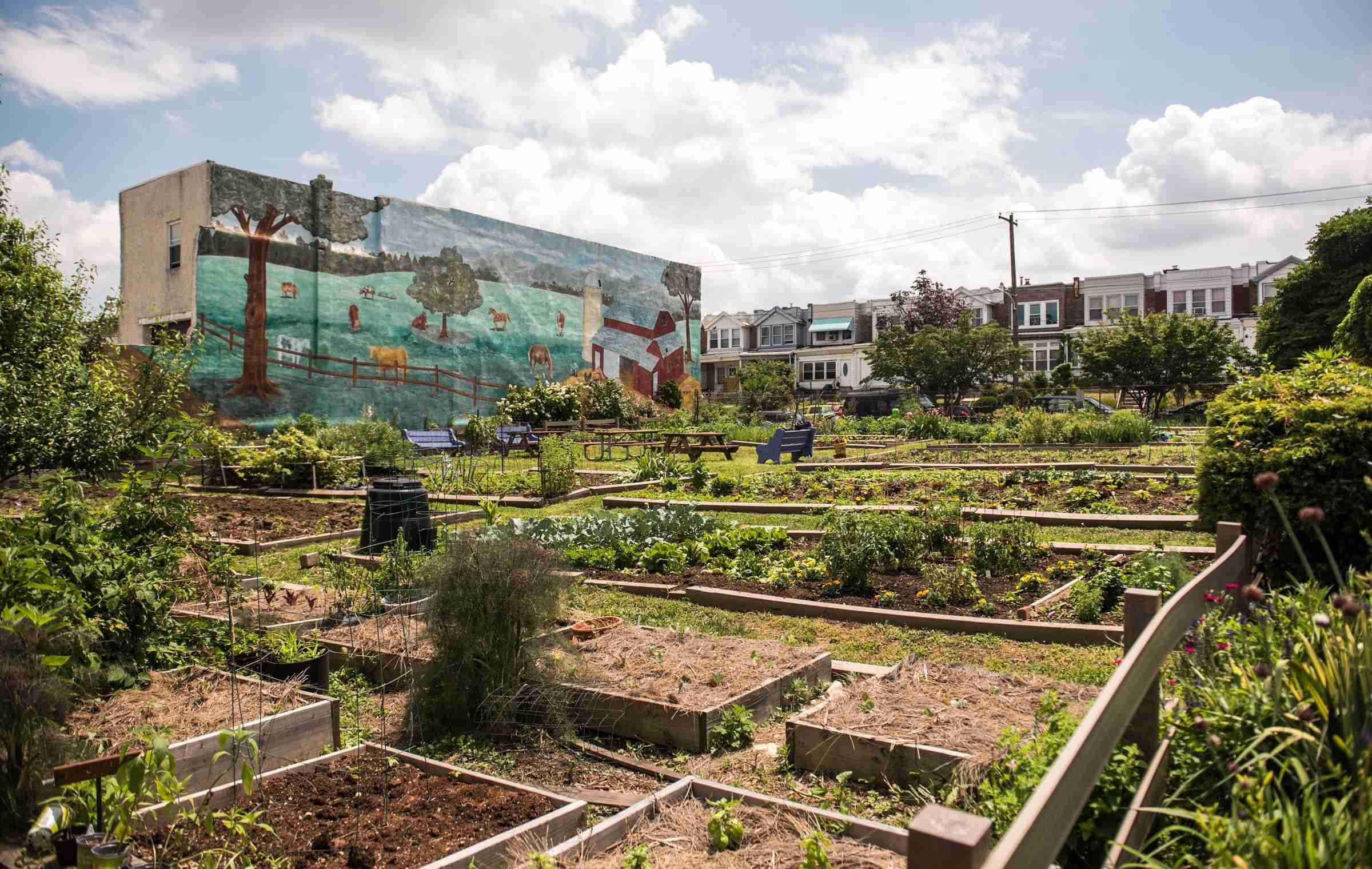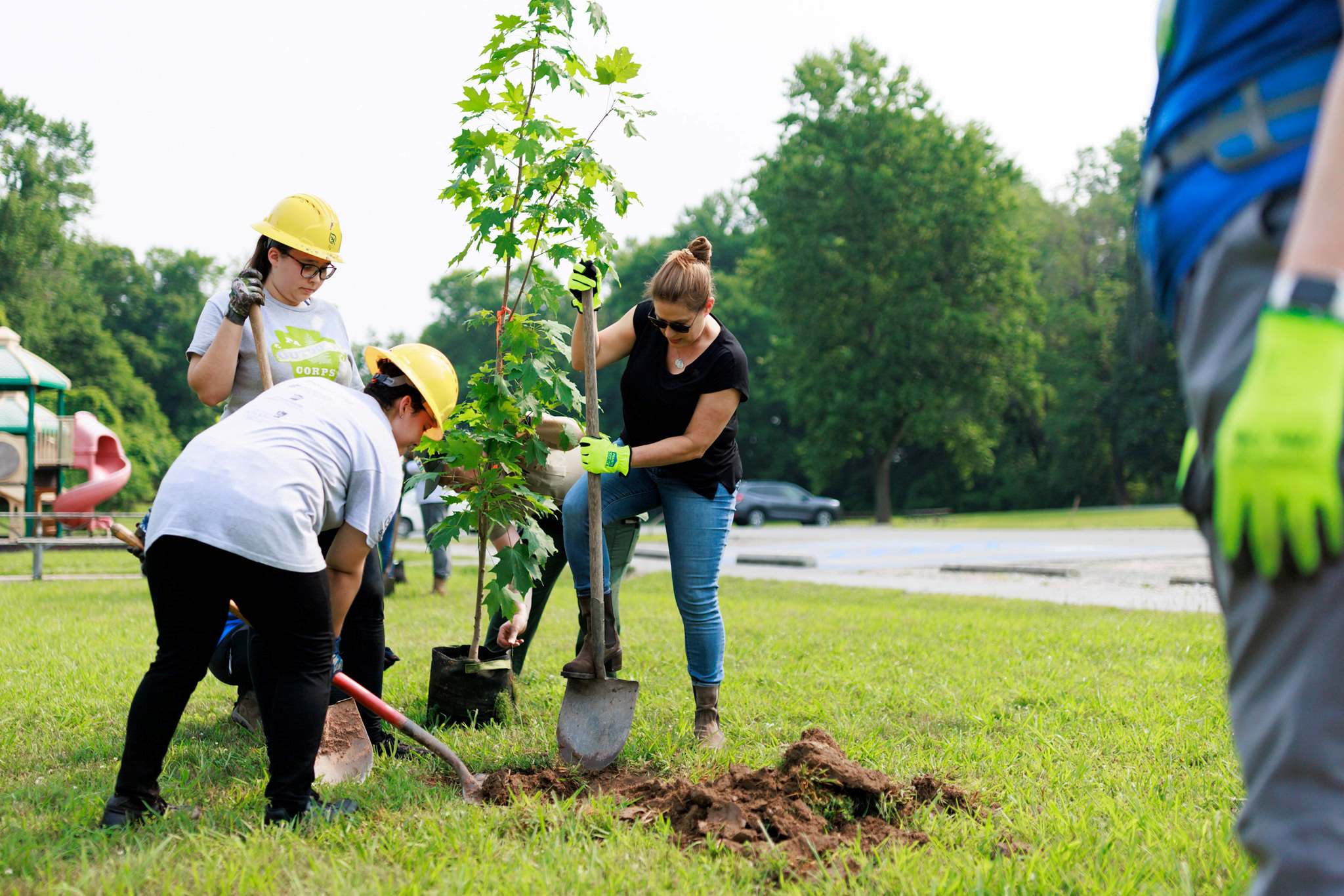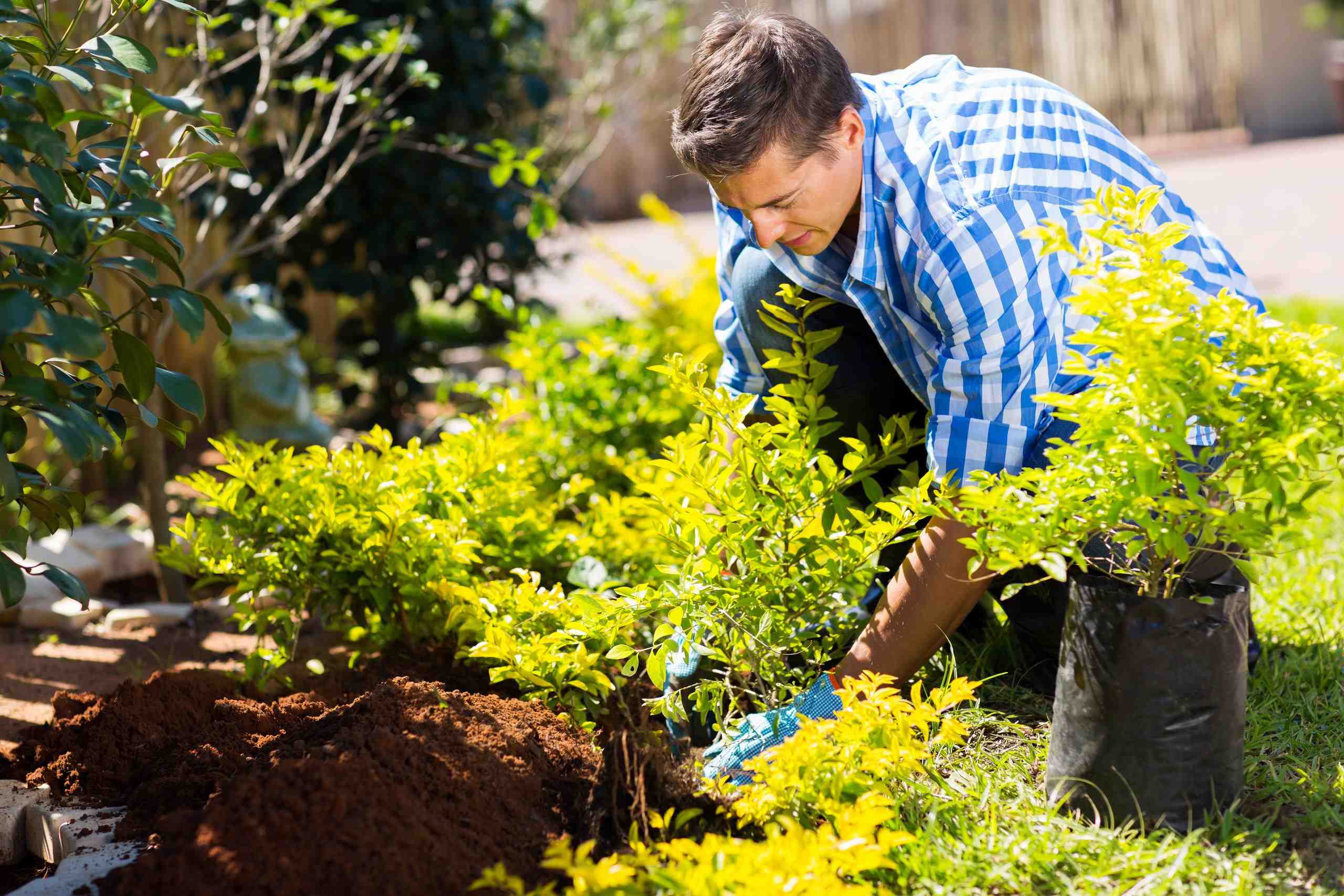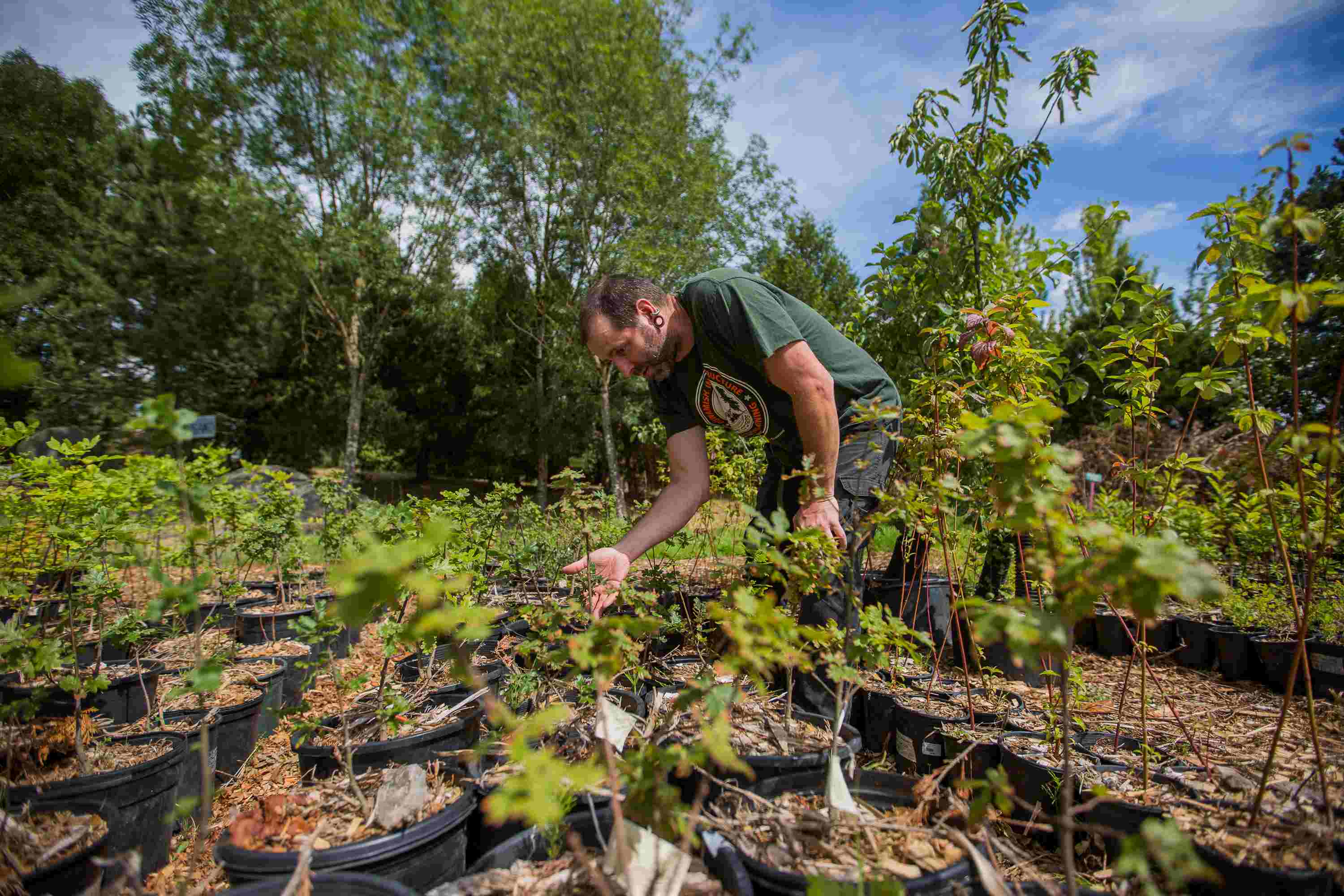Home>Gardening Basics>Understanding Soil>What Planting Zone Is Chicago In


Understanding Soil
What Planting Zone Is Chicago In
Modified: January 22, 2024
Discover the planting zone for Chicago and understand the importance of soil. Get expert tips for successful gardening in the Windy City.
(Many of the links in this article redirect to a specific reviewed product. Your purchase of these products through affiliate links helps to generate commission for Chicagolandgardening.com, at no extra cost. Learn more)
Table of Contents
Introduction
Welcome to the beautiful city of Chicago, where urban landscapes are filled with green spaces and bustling gardens. If you’re a gardening enthusiast or simply interested in understanding the soil and climate conditions in the city, then you’re in the right place. One key factor that influences successful gardening is knowing the planting zone of a particular area.
Understanding soil and its characteristics is crucial for any gardener, as it provides valuable insights into the fertility and composition of the land. Factors such as temperature, precipitation, and the specific needs of plants can also be influenced by soil type. By getting familiar with the soil in your area, you can make informed decisions about which plants thrive best and how to care for them effectively.
However, soil knowledge alone is not enough. The next step is understanding the planting zones specific to your region. Planting zones are geographically defined areas that indicate the average minimum temperatures experienced in a given location. These zones classify regions based on their climatic conditions, which in turn determine the types of plants that are likely to flourish.
Knowing your planting zone is vital for several reasons. It helps in choosing the right plants that are suitable for your region, ensuring their healthy growth and successful cultivation. By selecting plants that are adapted to your local climate, you can significantly increase their chances of survival, as they are naturally adapted to the prevailing weather conditions.
Additionally, understanding your planting zone can guide you in determining when to plant certain crops and flowers. Climate variations, such as frost dates and growing seasons, may be specific to different planting zones. By using this information, you can plan your gardening activities accordingly and maximize the potential of your garden.
In the following sections, we will delve into the specifics of planting zones, explore the plant hardiness zones in depth, and uncover the planting zone for the vibrant city of Chicago. Understanding Chicago’s planting zone will provide valuable insights for gardeners, enabling them to make informed decisions about their green spaces and create thriving gardens that add beauty to the cityscape.
Understanding Planting Zones
Planting zones, also known as hardiness zones, are geographical regions that are classified based on their average minimum temperatures. They provide essential information to help gardeners determine which plants are suitable for their specific location. Planting zones are determined by the United States Department of Agriculture (USDA), which uses temperature data collected over many years to establish these zones.
The USDA divides the United States into different hardiness zones, ranging from Zone 1, which experiences the coldest temperatures, to Zone 13, which encounters the warmest temperatures. Each zone is further divided into “a” and “b” subzones, with “a” representing the colder half and “b” indicating the warmer half of the zone.
The primary criterion for determining plant hardiness zones is the average annual minimum temperature in a specific area. This temperature is crucial because it affects plants’ ability to survive the winter and thrive in the following growing season.
Plant hardiness zones are further classified into specific temperature ranges. These ranges help to identify the types of plants that can withstand the low temperatures in a particular zone. For example, Zone 3 has an average annual minimum temperature ranging from -40°F to -30°F (-40°C to -34°C), which means that plants grown in this zone must be able to survive extreme cold.
In addition to minimum temperatures, other climate factors, such as rainfall and snowfall, can also influence plant growth and adaptation. Some plants may have specific tolerance levels for moisture, making it important to consider these factors alongside the hardiness zone when selecting plants for a garden.
It’s important to note that while planting zones provide valuable guidance, they are not the only factor to consider when planning a garden. Other microclimates within a region can also exist, such as urban heat islands or sheltered areas, that might experience slightly different conditions.
Understanding planting zones is essential for both experienced and novice gardeners. It helps in selecting plants that are well-suited to the local climate, improving their chances of survival. By considering the unique characteristics of a planting zone, you can create a garden that thrives and flourishes, enhancing the beauty of your outdoor space.
The Importance of Knowing Your Planting Zone
Knowing your planting zone is crucial for successful gardening and maximizing the potential of your outdoor space. Here are some key reasons why understanding your planting zone is important:
Selecting the Right Plants: Different plants have specific temperature requirements for optimal growth. By knowing your planting zone, you can choose plants that are well-suited to the climate in your area. Selecting the right plants ensures that they can withstand the minimum temperatures and thrive in the prevailing weather conditions. This knowledge allows you to curate a diverse and vibrant garden that will thrive in your specific region.
Planning Your Planting Schedule: Understanding your planting zone helps you plan the timing of your gardening activities. Planting zones provide valuable insights into the average dates of first and last frost, as well as the length of the growing season. This information helps you determine when to start seeds indoors, when to transplant seedlings, and when to directly sow certain crops. Planning your planting schedule according to your planting zone ensures that your plants have sufficient time to grow and produce a bountiful harvest.
Optimizing Plant Care: Different planting zones have varying climate conditions, such as temperature and precipitation patterns. By knowing your planting zone, you can adjust your plant care practices accordingly. For example, if you live in a hot and dry zone, you may need to provide extra water and shade to your plants. Conversely, if you reside in a cooler zone, you may need to protect your plants from frost and provide insulation during colder months. Understanding the unique needs of your planting zone allows you to optimize your plant care practices and ensure the health and vitality of your garden.
Preventing Plant Loss: Planting outside of your recommended zone can lead to plant stress and increased susceptibility to pests and diseases. Plants that are not adapted to your zone’s specific climate conditions may struggle to survive and may be more prone to failure. By selecting plants that are well-suited to your planting zone, you can minimize the risk of plant loss and increase the success rate of your gardening endeavors.
Promoting Sustainable Gardening: Understanding your planting zone fosters sustainable gardening practices. By selecting native and climate-appropriate plants, you can create a self-sustaining ecosystem that requires less water, fertilizer, and pest control measures. This helps conserve resources, reduces environmental impact, and promotes a balanced and resilient garden that contributes positively to the local ecosystem.
By knowing your planting zone, you can make informed decisions about your garden, select the right plants, and implement appropriate care practices. This knowledge empowers you to create a thriving and beautiful garden that enhances your outdoor space and brings you joy throughout the seasons.
Plant Hardiness Zones
Plant hardiness zones are a classification system used to determine the suitability of plants for specific regions based on their ability to withstand the average minimum temperatures. The United States Department of Agriculture (USDA) has developed a widely recognized and used plant hardiness zone map that divides the country into different zones, each representing a range of temperatures.
The USDA plant hardiness zone map is divided into 13 zones, ranging from Zone 1, with its coldest temperatures, to Zone 13, where the climate is much warmer. These zones take into account the average annual minimum temperature recorded over a period of many years. Each zone is further divided into subzones, designated as “a” or “b,” to provide more specific temperature ranges.
Plant hardiness zones help gardeners and plant enthusiasts identify the types of plants that are most likely to thrive in a particular region. They offer an essential tool for selecting plants that can withstand the winter cold and thrive in the growing season. By choosing plants that are within the recommended hardiness zone for their region, gardeners can increase the chances of success and ensure the healthy growth of their plants.
The USDA plant hardiness zone map is not the only system used worldwide. Other countries may have their own mapping systems that take into account local climate and temperature variations. However, the USDA map is widely adopted and provides a cohesive standard for gardeners in the United States to reference.
It’s important to keep in mind that plant hardiness zones are just one factor to consider when selecting plants for your garden. Other factors, such as soil type, sun exposure, and moisture levels, also play a significant role in determining a plant’s suitability for a specific location. Considering additional factors alongside the hardiness zone can help create a more comprehensive understanding of the conditions that your plants will encounter.
Plant hardiness zones are a valuable resource for gardeners and landscapers alike. They provide a framework for selecting plants that are well-adapted to the local climate and have a higher likelihood of thriving in their designated regions. By understanding and utilizing the plant hardiness zone system, gardeners can make informed decisions about plant selection and create beautiful and resilient gardens that are well-suited to their unique environment.
Chicago’s Planting Zone
Located in the heart of the Midwest, the city of Chicago falls within USDA Hardiness Zone 6a. This zone represents the average minimum winter temperatures experienced in the region, which typically range from -10°F to 0°F (-23°C to -18°C).
Chicago’s planting zone designation of 6a indicates that the city experiences cold winters, but also enjoys a moderate growing season. This means that gardeners in Chicago can cultivate a wide range of plants that are well-suited to the local climate.
With the arrival of spring, Chicago’s planting zone allows for the growth and development of various types of flowers, fruits, vegetables, and ornamental plants. This diverse range of flora makes it possible for gardeners to create beautiful and vibrant landscapes in their yards, parks, and community gardens throughout the city.
However, it’s important to note that while the planting zone provides a general guideline, it is not the only factor to consider when selecting plants for Chicago’s unique environment. Other microclimates within the city, such as differences in elevation, exposure to sunlight, and proximity to bodies of water, can also influence plant growth and survival.
Chicago’s planting zone also experiences distinct seasonal variations. Summers can be hot and humid, allowing for the growth of heat-loving plants such as tomatoes, peppers, and sunflowers. Winters, on the other hand, necessitate care and protection for sensitive plants, requiring gardeners to take measures to shield their plants from frost and cold temperatures.
Despite these challenges, Chicago’s planting zone offers gardeners exciting opportunities for creativity and exploration. The city’s vibrant gardening community showcases a wide array of plants, both native and non-native, that thrive in this zone. Plus, many local nurseries and garden centers are well-equipped with the knowledge and resources to assist gardeners in selecting the most suitable plants for their specific needs.
By utilizing the knowledge of Chicago’s planting zone, gardeners can make informed choices and select plants that have a higher chance of thriving in the city’s unique climate. Whether you have a small balcony garden or a vast backyard oasis, understanding Chicago’s planting zone can help you create a beautiful and sustainable garden that enhances the urban landscape and brings joy to your outdoor space.
Factors Affecting Chicago’s Planting Zone
A variety of factors contribute to Chicago’s specific planting zone and influence the suitability of plants for the region. Understanding these factors can help gardeners make informed decisions and adapt their gardening practices accordingly. Here are some key factors affecting Chicago’s planting zone:
Temperature: The average minimum winter temperature is a significant factor in determining a region’s planting zone. Chicago’s planting zone of 6a reflects the range of -10°F to 0°F (-23°C to -18°C) experienced during the winter months. This cold climate influences the types of plants that can successfully grow and survive in the area.
Microclimates: Even within a specific planting zone, microclimates can exist. Chicago, a large city with diverse landscapes, experiences variations in temperature, sun exposure, and wind patterns. Microclimates can be created by factors such as proximity to Lake Michigan, urban heat islands, or the presence of sheltered areas. These microclimates can result in slightly different growing conditions within different parts of the city.
Soil Composition: The type and quality of soil in an area significantly impact plant health and growth. In Chicago, the soil composition can vary depending on location. The most common soil type is loamy soil, which is a mixture of sand, silt, and clay that provides good drainage and fertile conditions for plant roots. However, some areas may have soil that is sandy, clay-rich, or compacted, requiring specific amendments and care for optimal plant growth.
Precipitation: Chicago experiences a moderate amount of rainfall throughout the year, with slightly higher amounts during the growing season. Adequate moisture is essential for plant growth, and gardeners must consider water availability and potential drainage issues, especially in urban environments with impervious surfaces. Proper watering techniques and strategies are crucial to ensure plants receive the required amount of moisture.
Seasonal Variations: Chicago has distinct seasons, including hot summers and cold winters. Gardeners need to account for these seasonal variations when selecting plants and planning their gardening activities. Heat-tolerant plants are suitable for the summer months, while cold-hardy plants and protective measures are necessary to withstand the winter frost.
Urban Environment: Chicago’s urban environment can affect planting conditions. Factors such as pollution, limited space, and shade from buildings can impact plant health. Gardeners may need to choose plants that are more tolerant of urban stresses or find creative solutions such as rooftop gardens or vertical gardening to maximize growing space.
By considering these factors, Chicago gardeners can make informed decisions about plant selection, soil management, watering practices, and other gardening techniques that promote the successful growth and development of their plants. Adapting gardening practices to the specific factors affecting Chicago’s planting zone ensures that plants thrive and contribute to the beauty of the city’s landscapes.
Recommended Plants for Chicago’s Planting Zone
Chicago’s planting zone, classified as zone 6a, offers a diverse range of plant options that are well-suited to the city’s climate and growing conditions. Whether you’re looking to create a colorful flower garden, cultivate fresh vegetables, or add structure with trees and shrubs, here are some recommended plants that thrive in Chicago’s planting zone:
Flowering Plants: Chicago’s planting zone allows for a beautiful array of flowering plants. Consider planting perennials such as coneflowers (Echinacea), black-eyed Susans (Rudbeckia), and daylilies (Hemerocallis) that can withstand the winter cold and bloom with vibrant colors during the summer months. Annuals like marigolds (Tagetes), petunias (Petunia), and zinnias (Zinnia) also add bursts of color to garden beds and containers throughout the growing season.
Vegetables: Take advantage of Chicago’s planting zone by growing a variety of vegetables. Cool-season crops such as lettuce, spinach, and broccoli can be planted early in the spring, while warm-season crops like tomatoes, peppers, and cucumbers thrive during the heat of the summer. Root vegetables like carrots and beets also do well in the region’s fertile soil.
Herbs: Enhance your culinary experience by growing herbs that flourish in Chicago’s planting zone. Consider planting favorites like basil, rosemary, thyme, and parsley. Herbs can be grown in containers, herb gardens, or intermixed with other plants in your garden beds.
Trees: For landscape structure and shade, choose trees that are well-suited to Chicago’s climate. Some recommended tree species include sugar maples (Acer saccharum), red maples (Acer rubrum), flowering dogwoods (Cornus florida), and crabapples (Malus spp.). These trees are known for their stunning foliage, spring blooms, and tolerance to the cold winters.
Shrubs: Shrubs add texture, privacy, and visual interest to your garden. Consider planting shrubs like hydrangeas (Hydrangea), spireas (Spiraea), potentillas (Potentilla), and viburnums (Viburnum). These shrubs offer beautiful flowers, attractive foliage, and can withstand the weather conditions in Chicago.
Native Plants: Incorporating native plants into your garden not only supports the local ecosystem but also ensures that you have plants well-adapted to Chicago’s planting zone. Native wildflowers like purple coneflower (Echinacea purpurea), black-eyed Susan (Rudbeckia hirta), and blazing star (Liatris spicata) are great choices for attracting pollinators and adding a touch of natural beauty to your garden.
Groundcovers: Groundcovers help to control weeds, prevent erosion, and add a lush carpet of foliage to your garden beds. Chicago-friendly groundcovers include creeping phlox (Phlox subulata), hostas (Hosta), pachysandra (Pachysandra terminalis), and creeping thyme (Thymus serpyllum).
These recommended plants are just a starting point for gardeners in Chicago. Keep in mind that factors such as soil type, sun exposure, and microclimates within the city may influence plant suitability. Consulting with local garden centers, attending gardening workshops, and connecting with fellow Chicago gardeners can provide further insights and recommendations for plants that thrive in the area.
By choosing plants that are well-adapted to Chicago’s planting zone and considering the specific growing conditions in your garden, you can create a landscape that flourishes with beautiful colors, bountiful harvests, and a harmonious blend of native and ornamental plants.
Conclusion
Understanding soil and the planting zones specific to an area is fundamental for successful gardening. Chicago, with its unique climate and planting zone of 6a, offers a wealth of opportunities for gardeners to create beautiful and thriving landscapes.
By knowing your planting zone, you can select plants that are well-suited to Chicago’s climate, ensuring their ability to withstand the winter cold and thrive in the growing season. Planning your planting schedule based on the zone’s frost dates and growing season length allows you to optimize your gardening activities and maximize your harvest.
Factors such as temperature, microclimates, soil composition, precipitation patterns, and seasonal variations all influence plant growth in Chicago. Adapting your gardening practices and selecting plants that are suitable for your specific conditions can help overcome these challenges and create a garden that thrives year-round.
From vibrant flowers and tasty vegetables to towering trees and lush shrubs, Chicago’s planting zone offers a wide range of plant options. Native plants, in particular, contribute to the local ecosystem while adding natural beauty to your garden. Additionally, incorporating groundcovers promotes weed control and erosion prevention.
It’s important to remember that gardening is a journey of continuous learning and experimentation. Engaging with local gardening communities, consulting with experts, and staying curious about new plant varieties and techniques will help you grow and evolve as a gardener in Chicago.
So, roll up your sleeves, get your hands in the soil, and let your gardening adventure begin. Whether you have a small urban garden or a spacious suburban landscape, understanding Chicago’s planting zone will empower you to create a thriving and beautiful garden that brings joy and enhances the natural beauty of the city.










